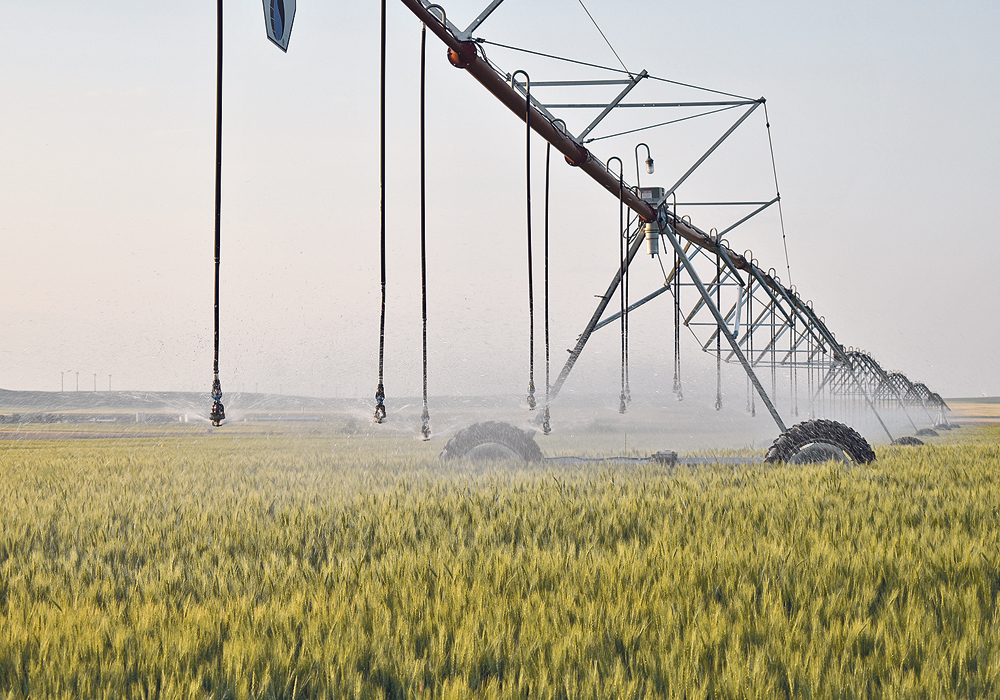Dryness prompts St. Mary River Irrigation District and Lethbridge Northern Irrigation District to go to 12 inches per acre
The irrigation season has begun in southern Alberta and some irrigation districts have altered their plans as dry conditions persist across much of the region.
The St. Mary River Irrigation District (SMRID) and the Lethbridge Northern Irrigation District (LNID) have reduced their water delivery commitment to 12 inches per acre from the more usual 16 to 17.5 inches.
Little to no precipitation across the south in the past month, coupled with low water levels in reservoirs that feed those two districts, have prompted a cautious approach to water allocation, although any good rainfall during the growing season could alter that approach.
Read Also

Farming Smarter receives financial boost from Alberta government for potato research
Farming Smarter near Lethbridge got a boost to its research equipment, thanks to the Alberta government’s increase in funding for research associations.
“For the first time the district has passed a bylaw reducing the committed allocation to 12 inches per acre and the board will review that on a monthly basis,” said Alan Harrold, general manager of the LNID.
“We’re quite confident that 12 inches won’t be an issue.”
The LNID depends on storage from the Oldman River Dam near Pincher Creek, Alta., and the Keho reservoir north of Nobleford, Alta. Harrold said the Oldman Dam is at 52.6 percent of full and the three snow pillows that melt to feed the dam are all at average to below average levels. Keho is at 91 percent of full.
Snowfall the weekend of April 27-28 may have helped the situation, however.
“We’re still hopeful, and I’m hoping that more of this snow that was in the foothills actually stuck into the mountains and improved those snow pillows,” he said.
“With the dam as low as it is to start, at just over 50 percent, we’re hopeful that quite a bit of that runoff can be captured.”
In the SMRID, general manager Terrence Lazarus said the district’s commitment of 12 inches is also cautious given moisture conditions at the start of the irrigation season.
“We didn’t want to go too high and not be able to deliver,” said Lazarus.
He added that internal storage within the SMRID is adequate and although rivers are low, on-stream storage at the St. Mary reservoir is filling. Late April snowfall delayed delivery of water in some parts of the district because canals were full of snow.
There are no worries about water availability in the Bow River Irrigation District, which draws water from the McGregor, Travers and Little Bow reservoirs.
“Those are all at normal levels for this time of year,” said BRID general manager Richard Phillips.
That storage will allow the district to meet full demand even if there is no further rainfall, he said.
“We normally have the best water supply among the districts.”
The BRID did not alter its allocation plans and retained the 24 inches per acre limit established by the district board in 2002.
Like several other irrigation districts, the BRID has expanded its irrigable acres this year and will increase to 260,000 from the former level of 211,000 acres over the next several years.
Phillips attributes that primarily to farmers’ use of more efficient irrigation systems, including low-pressure pivots. The BRID has a higher percentage of pivots than any other district at 93 percent and has 55 to 60 percent of its delivery system in pipelines rather than canals. That limits water losses from seepage and evaporation.
The LNID will add 3,400 more acres this year to total 191,400 acres under irrigation. Harrold said the board is considering further expansion but is proceeding cautiously.
In the SMRID, available acres are now fully allocated, said Lazarus, and the district comprises about 400,000 acres.
The SMRID, LNID and BRID all completed major projects in the off-season and all three general managers expressed concern about funding available from the province for further work. Harrold said the previous provincial government reduced funding to $14 million from the $19 million that used to be available, and that amount was for use by all 13 districts.
Given that the average project costs $4 to $5 million, funding is tight and districts await word on provincial funding available for the coming year.
“(Irrigation) is a huge driver of the economy down here,” said Phillips.
“It’s an investment that does return a net gain.”
All 13 irrigation districts expect to be delivering water to farmers no later than the second or third week of May.


















